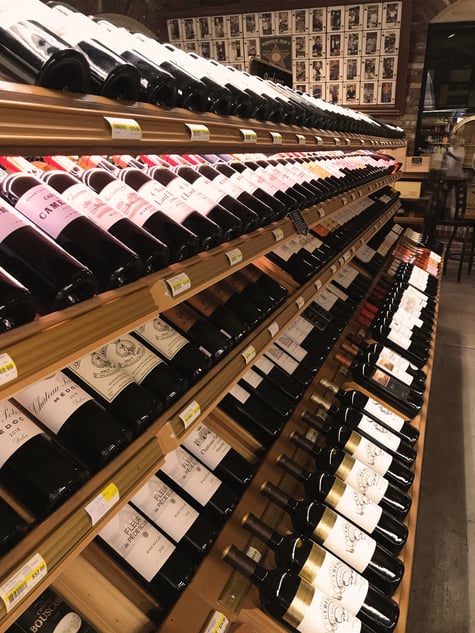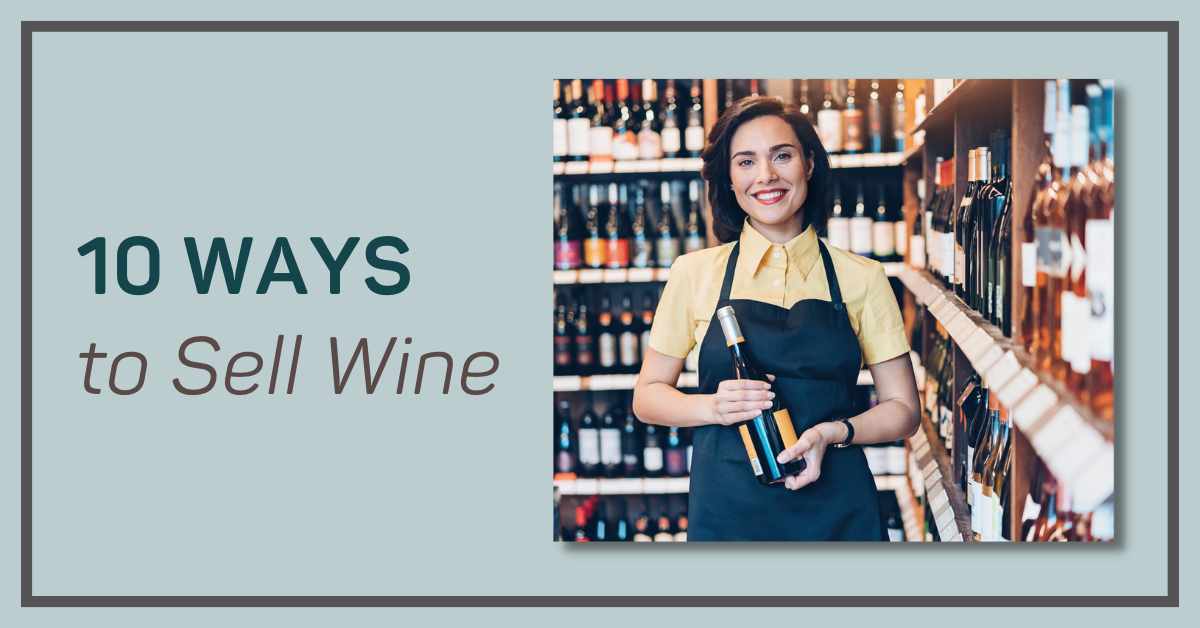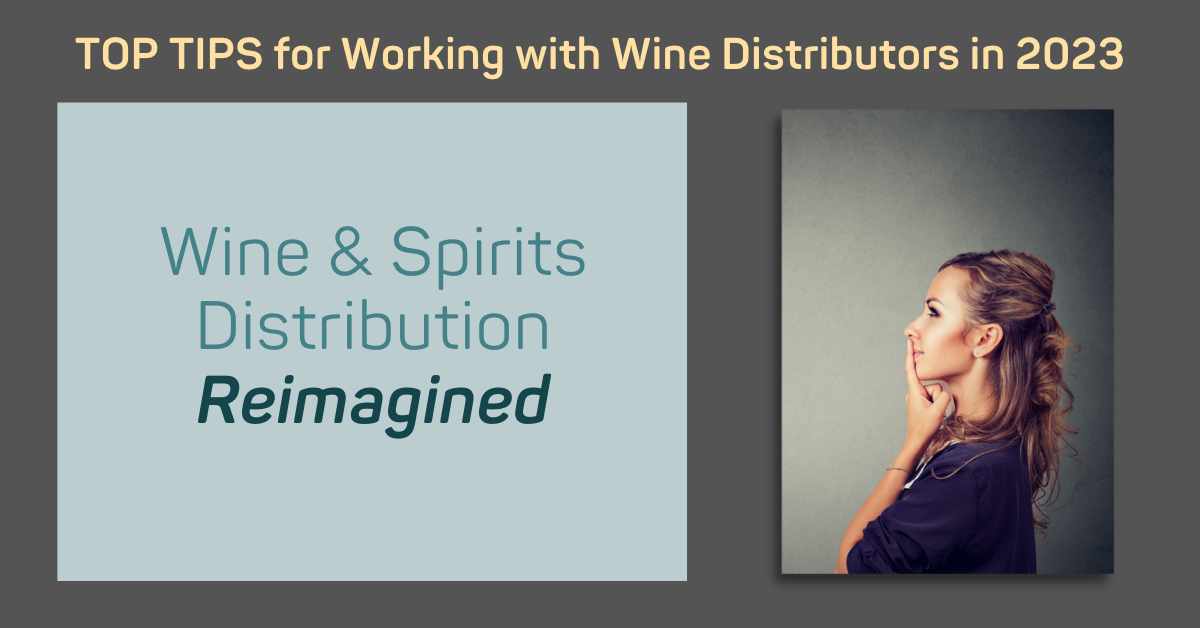10 Ways to Sell Wine for Winery Startups and Small Wineries (Video)
It's getting harder and harder for small wineries and winery startups to sell all the wine they make. This video is aimed primarily at the smaller...
10 min read
 Dan Salisbury
:
5/18/23 5:33 PM
Dan Salisbury
:
5/18/23 5:33 PM

Some things are harder to prove than others: how the universe came to exist, whether or not there’s an afterlife, or that I’m writing this article without any help from Chat GPT.
Then, there are the easy things. I can prove, for instance, that people shop online – spontaneously and often. Just ask our recycling bin.
I know because there’s a well-worn path, a dopaminergic ecosystem relying (and arguably preying) upon my wife’s love of cute knick-knacks. Was she planning on buying those mint green, bone conducting headphones from China, or that clever baseball cap that lets you stick your ponytail through the top of it? Nope. Does she regret buying them? Absolutely not.
Now that I’ve thrown my bride under the bus, I should note that I’m no different; my taste is just bougier. Online subscriptions have massacred my personal budget – 3 artisan hot sauces every month from Heatonist, Oats Overnight for those 5am gym sessions, and enough running clothes to appease the landfill gods for a century or two.
We’re not here to air out my bank statement, however. Bless your heart if you’ve stuck around this long. Have you considered a career as a therapist?
No; we, the people of the wine industry, are here to air our grievances and demand answers. Why is it so hard to huck that get-loose juice like it’s 1999, when every other consumer product category seems to be living its best life online?
First, we’ll take a look at this well-oiled machine of online consumerism and see what makes the shopping experience so gosh dang powerful on Instagram, Tik Tok, and every newfangled platform on the horizon.
Then, I’ll cite 5 factors that pretty well explain why your books are in the red (and there’s graying on your head). You’re not crazy; nobody gets into this industry expecting these particular growing pains.
Marketers have entrained consumers to follow a script for shopping online. Shoppers and brands alike rarely deviate from it; it’s practically muscle memory.
The length of this ritual varies and will someday change altogether, but for now, it goes something like this:
The non-linear nature of this customer journey in no way hinders shoppers from going and repeating this process again and again. This power shift from seller to buyer has taken place over the last 30 years thanks to the accessibility and abundance of information available to everyone, regardless of education. It’s for this very reason that outbound marketers are out of work.
The script above, I’m sorry to say, is actually mercifully (and grossly) oversimplified. This is what happens if all goes well – a best-case scenario for cold traffic. There are plenty of products that tend to sell like hotcakes when an impulse buyer stumbles across their Instagram ad. Why not wine and craft spirits?
I went to college to be a famous author. When that didn’t work out, I went to school to see if my worldview hypothesis of origin, Christianity, held its own merit against all the other possible explanations for reality. When no clear career path emerged, I went to school to make music for a “living.” I still haven’t caught the hint, and now I pay the bills… selling wine and spirits *cue hillbilly laughter.*
Little did I know that wine is hardly less competitive than music; the United States alone is home to at least 11,691 wineries as reported in this article by Wine Business Monthly. I’d like to say distilleries have it easier, but according to the American Distilling Institute, there are 2,230 active US distilleries as of July 15, 2022.
While the wine and music industries have a lot in common, the predicament that plagues US wine sales most closely resembles the distribution bottlenecking challenge facing new artists trying to get discovered before social media came on the scene.
The aggressive consolidation of wine distributors over the last ~30 years, alongside the simultaneous growth in number of wineries and distilleries, has made it impossible to sell alcoholic beverages the way we did in the 80s and 90s, or even 2010s. Distributors are overwhelmed and powerless to help every small brand make a splash in the market.
One unfortunate upshot of this “major label” phenomenon is that, despite the explosion of small, craft, family-owned brands, wine consumption remains largely homogenized; most casual drinkers trust a handful of giant, well-known brands when it’s time to imbibe. Recent trends, however, have granted smaller wineries a growing tailwind of quality quaffers with wanderlust in their wallets. Truly sorry; English major. Can’t help myself.
I’m personally responsible for hundreds of thousands in revenue and have sold thousands of cases of lesser-known, family owned, sustainable and organic wines for my clients online using Facebook and Instagram advertising and email marketing. Having ushered wineries and distilleries comfortably through the pandemic and beyond, I can officially say – despite my hopelessly unlucrative higher education journey – that Direct to Consumer wine sales are in my wheelhouse now.
What else prevents people from buying your wine and spirits online?
There’s no 5-year warranty on a Jereboam of Chablis. Wine – especially from smaller brands – tends to be kinda expensive. It’s a luxury item offering fleeting enjoyment, with an intimidating variety of fast tracks to buyer’s remorse.
Think about what you’re asking the consumer to do here. Instead of going to the liquor store or ordering from one of your competitors that they already know they like, they should . . . create an account and enter their credit card info for something they’ll receive in a couple of weeks on a good day?!
God help you if your product isn’t inherently unique or distinct from the other ninety zillion chardonnays out there.
This is why it’s so important to throw them some kind of bone to get them in the door. I’m not saying you need to treat your brand equity like a piñata; there are easier and healthier strategies than deep discounts for meeting first-timers halfway.
Unless you’re using alternative packaging – which presents its own challenges in educating and building trust with consumers – wine is heavy and expensive to ship. To make it worth shipping (profitable), you really need to sell it in bulk, which really means that anyone who wants to buy your wine is probably staring down the barrel of $150 or more. That’s quite a commitment!
To stay competitive, you really need to offer flat rate shipping and quantity discounts, like free shipping on a case. I know your competitors are offering it, because it’s part of how I was able to sell so much wine during busy times of the sales year.
Don’t step over a dollar to pick up a dime, here – once you’ve acquired a happy customer, it’s much easier to gain repeat business and turn them into club members and evangelists for your brand. Shipping is not the area to get stingy in an effort to save your way to prosperity; ask your customers to foot too much of the bill, and they’ll find a more generous date next time.
The goal is to convince people to fall in love with the experience your winery provides so that they’re proud to identify themselves as VIP members of your little tribe. If they can’t access this level of belonging and more with your winery, they’ll try one of the other 12,000 options.
What is the “flywheel effect”? Jim Collins develops this concept in his book, Good to Great:
“No matter how dramatic the end result, good-to-great transformations never happen in one fell swoop. In building a great company or social sector enterprise, there is no single defining action, no grand program, no one killer innovation, no solitary lucky break, no miracle moment. Rather, the process resembles relentlessly pushing a giant, heavy flywheel, turn upon turn, building momentum until a point of breakthrough, and beyond.”
– From Jim’s website here.
Citing reasons 1, 2, and 3 so far, it takes waaay longer to generate enough customer data to really start hitting your stride with Direct To Consumer (DTC) wine and spirits sales. If beard combs are Cesnas, selling wine online is like getting a Boeing 757 off the ground – the laws of physics are the same, but it takes a hell of a lot more energy to get that giant mass moving at takeoff speeds.
Meta recommends optimizing for a conversion that happens 50 times a week minimum for the algorithm to learn enough to deliver your ads to the right FB/IG users at the right time. When’s the last time you had 50 website purchases in a week?
Because wine is a higher ticket item, usually shipped in bulk, it’s really hard to feed any algorithm enough data to really get things moving. You might consider optimizing for AddToCarts instead, but stepping higher up the funnel like this presents disadvantages, as you’re no longer telling the algorithm what you ultimately want the customer to do – purchase.
There’s only one way to overcome this slow trickle of conversions. Take all of the aforementioned penny-pinching you’re used to devoting to things like shipping costs and ad spend and channel that miserly energy instead to your customer data. Every time somebody visits your tasting room, visits the homepage of your website, or adds an item to their cart, make damned sure you’re capturing and storing that person’s information using the Meta Pixel, your POS system, your eCommerce provider, and anything else you have at your disposal.
Selling wine online is all about accumulating and leveraging your own first-party data – existing customers, tasting room visitors, and email subscribers, to be precise. Resourcefulness is the primary key to knocking your DTC sales out of the park.
Launching a Black Friday sale on a certain collection or SKU? Grab everyone who has purchased or shown interest in (clicked on) that item before, and create a warm (retargeting/remarketing) audience using that customer list. Hosting your popular annual event again? Grab the list of attendees from last year and target their lookalikes. Trying to boost club memberships at the end of the year? Start a referral program for your existing club members and offer gift memberships; target your best customers (with the highest lifetime value) and offer them a signup bonus gift with your most popular club tier.
I can’t overemphasize how much this 1:1 relevance approach to targeting supercharges return on ad spend. The success of any campaign depends on your ability to choose a target audience with a proven record of performing the desired end goal (conversion/call-to-action).
If you don’t have enough customer data to build data-rich warm audiences yet, then choose a cold audience whose interests closely align with your offer and use their engagement as a way to grow your warm audiences. I have seen ice-cold audiences outperform warm audiences that I was sure were the perfect match for a seasonal sale – a sobering reminder that it’s impossible to know what’s going to perform well without split testing several options first.
One of the hurdles of selling giggle water on the internet is that there’s a lot of laws about what you can and can’t do. The beverage alcohol industry is beholden to a wide gamut of laws from state to state, but several “do’s and don’ts” make this whole marketing and fulfillment process a headache bordering on migraine territory.
Potential customers aren’t entrained to jump through hoops to accommodate brands; they’re used to instant gratification, which means there’s little patience when things don’t go their way the first time. They don’t understand why they can order from winery x and not winery y, and they certainly don’t appreciate shipping delays even for the sake of protecting their wine from extreme heat and other fulfillment hazards.
Assuming you’re licensed to sell DTC in a strategic state and have watertight compliance/fulfillment systems in place, your ads have to pass Meta’s automated and often glitchy review process. God forbid you forget to raise the targeting to 21+, Meta reserves the right to terminate your ad account without giving you a warning or opportunity to fix the error.
Other industries have the luxury of selling in-app via the “catalogs” feature on Facebook and Instagram, taking advantage of “Advantage+ Shopping Campaigns.” Meta’s Commerce Policies prohibit the sale of alcohol directly from Facebook and Instagram, which means wineries are stuck driving traffic to their own websites to close the sale, where a cumbersome age-gate (mm/dd/yyyy) is enough to drive shoppers away.
Competing online as one of the “little guys” is like trudging through deep snow, but my clients and I have already broken trail and established a path to success. As it turns out, I’ve already shared 6 of my top tips for increasing winery or distillery website sales.
So what can a winery or distillery owner do? Well, the only option is to take matters into your own hands and leverage strategies that the big brands haven’t yet needed. Tech is, without question, the greatest equalizer available here.
In the same way that streaming services like Spotify and YouTube have democratized the distribution of new artists, the ability to sell online Direct to Consumer and to the trade via non-traditional, 3-tier compliant sales channels like Liberation Distribution and Provi have given winery and distillery owners the power to build their own faithful following and grow their own demand.
As the online wine market continues to proliferate, mastering traditional channels both on and off-premise can be a great source of revenue while your eCommerce data gathers momentum. To recalibrate your sales team in keeping with the times, check out our free mini-course, The Modern Sales Playbook for Wine and Spirits.
Looking for more personalized help selling online? Email help@winesalesstimulator.com and book some one-on-one time so we can custom-build a plan for your winery or distillery.

It's getting harder and harder for small wineries and winery startups to sell all the wine they make. This video is aimed primarily at the smaller...

If there is anyone out there who thinks the three-tier system will ever go away in the US Market, I would like to ask for a puff of whatever it is...

Selling more wine & spirits is the #1 imperative With very few exceptions, the number one request I get from my clients is to help them sell more wine